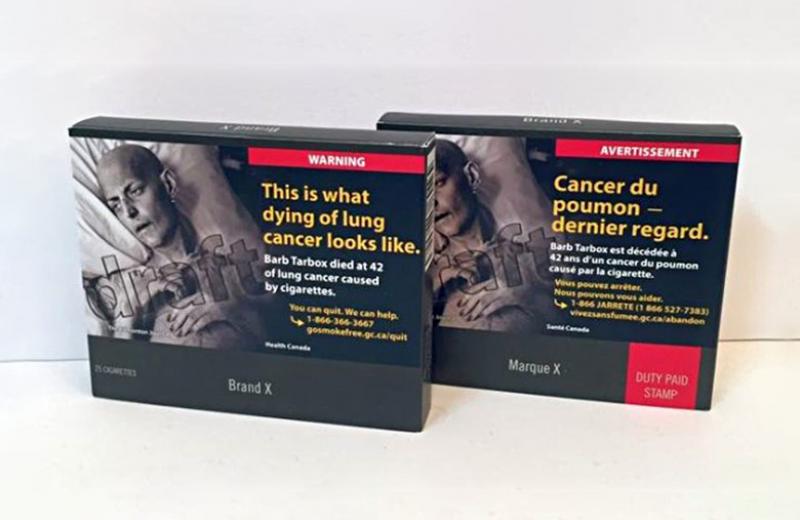Here’s a fact you might already know: Commercial tobacco use is the leading cause of preventable death in Canada and has negative health effects for all ages.
Here’s a fact you might not know: Across Canada, tobacco product packages will be stripped of all bright colours and logos, and will now be a plain brown default colour.
Plain packaging starts November 9 in Canada
Health Canada regulations for plain packaging take effect on November 9, 2019. At the manufacturer’s level, retailers will have a 90-day grace window to sell off their remaining coloured inventory. As of February 7, 2020, we will no longer see colour or design that have long been used to lure new users and create brand loyalty in the tobacco world.
What it will look like
All tobacco packaging will feature the same brown base colour, basic grey text, and minimalist layout under the new requirements. The size and appearance of cigarettes, cigars, and other products inside the packages will also be standardized.
This regulation is limiting the tobacco industry’s ability to advertise and market their products through attractive packaging. Research has shown that plain and standardized tobacco packaging reduces the appeal of tobacco products, particularly among youth. For example: the colour green in the tobacco world has traditionally been linked to menthol products, or so-called “slim” products, for female consumers. Slims and superslims, which critics say falsely promotes a less harmful tobacco product, will be banned by February 7, 2020, at the retailer level.
Packaging boxes will change too
In November 2021, the use of a cigarette box format known as “slide and shell” will be mandatory, though there will be a transition period for implementation. This is to enhance the size and impact of health warnings printed on the packaging. Further timelines are set for cigars and other tobacco products.
Plain packaging around the world
These requirements follow the lead of countries such as Australia and the United Kingdom, which have their own packaging rules and were at the forefront of tobacco packaging change. There has been resistance to plain packaging from tobacco companies, who suggest that plain packaging doesn’t work and that it may boost the illicit sale of tobacco products. At least 16 other countries have adopted similar measures and Canada will have one of the best tobacco plain packaging regulations in the world, setting multiple world precedents.
There are 29 countries and territories moving forward with plain packaging, with 16 having adopted or working on the measure.
For more information on plain packaging
Visit Health Canada: Plain and Standardized Appearance for Tobacco Packaging and Products.
Interested in quitting?
There are many reasons why one should quit smoking. It is always a good time to quit. Quitting smoking can be difficult. Replacing cigarettes with other tobacco products can still negatively affect your health. If you or someone you know is interested in quitting or decreasing their tobacco use, encourage them to talk to their primary care provider (such as a doctor or nurse practitioner).
The following tobacco cessation resources are also available:
- QuitNow offers free information, support, and counseling by trained professionals by phone, text, or email.
- BC Smoking Cessation Program: Everyone in BC can access 12 weeks of free nicotine replacement therapy (gum, patch, inhaler and lozenges) per calendar year through their local pharmacy. Women who are pregnant or lactating are advised to consult with their doctor or pharmacist.
- First Nations Health Authority benefits program offers supplementary coverage for nicotine replacement therapy.
Note: In this post, as in most public health messages, “tobacco use” refers to the use of commercial tobacco products like cigarettes and chewing tobacco as opposed to traditional uses of tobacco.














Comments